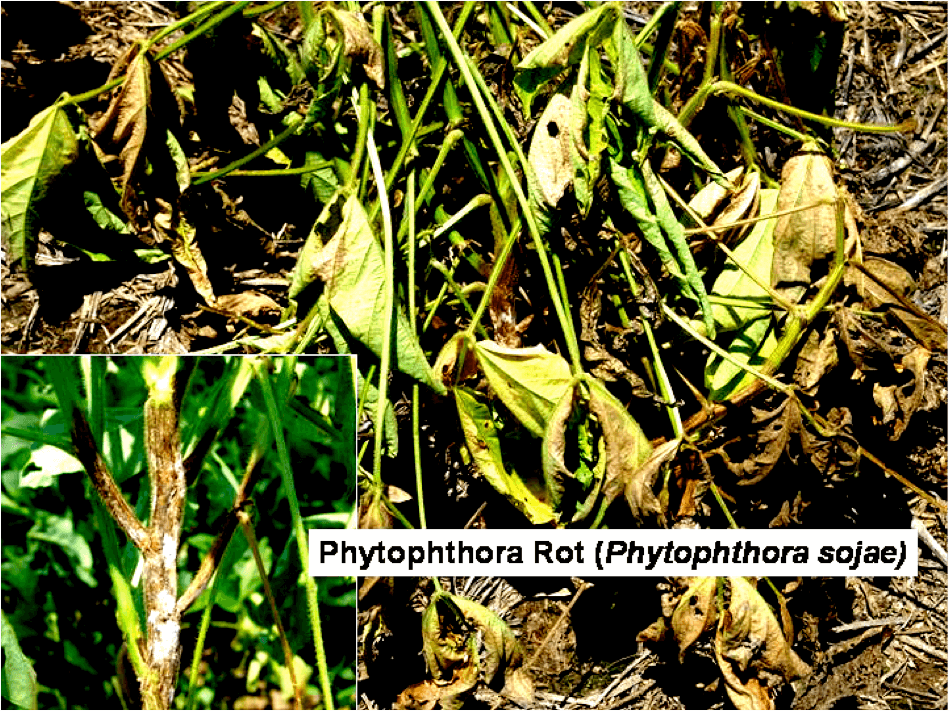Phytophthora rot is caused by an oomycete (fungus-like organism), Phytophthora sojae and can cause seed rots, pre- and post-emergence damping off early in the season although infection can occur at any stage of development in soybean. Infected older plants of susceptible varieties show a yellowing between the veins and leaf margins and a chlorosis of the upper leaves, followed by wilting. Leaves remain attached after plants die. A brown girdling of the stem, progressing up the stem as high as the 10th node, can be diagnostic of this disease. Foliar blight has been noted after heavy rains in soybean in the early vegetative stages. Older plants may be resistant to foliar blight.
